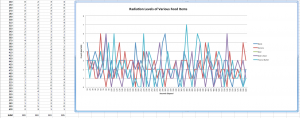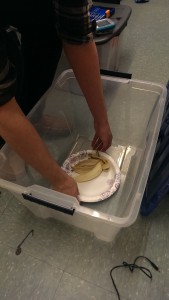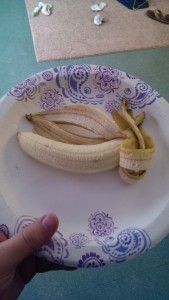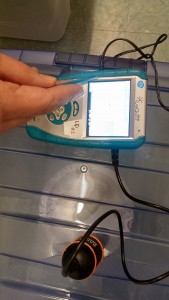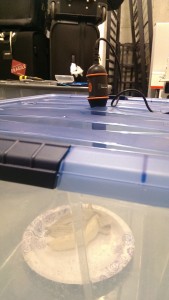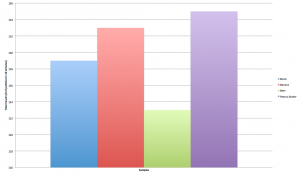Roles: Each member will be collaborating on conducting initial research on radioactivity, how it pertains to food, performing the experiments, and doing the calculations. In terms of initial research, each member will submit at least one scholarly article pertaining to food radiation in addition to an article about radiation in general. However, the rest of the project will be completed together.
Equipment Used: Vernier Radiation Monitor (to measure the emitted radiation at a given point), Laptop for Research, LabQuest Monitoring Software, various foods (based on list created), and a knife for cutting open food
Science/Technology Involved: The Vernier Radiation Monitor contains a Geiger-Müeller tube, which is built-in in a durable case for portability as well as flexibility when testing. A geiger counter is a type of particle detector, which measures ionizing radiation in a low-pressure gas in the tube. Geiger-Müller tubes have two main elements, which are the tube itself, and the electronics. The Geiger-Müller contains a gas, such as halogens, that are under low pressure. An electrical charge is sent through when a particle or photon of radiation ionizes the gas particles. In order to read a measurable number, the electronics in the tube are able to amplify each ionization via Townsend avalanche effect. Luckily, it requires no battery as it receives power from the data-collection interface. There is a thin glass panel which is then encased by a metal screen, which allows alpha radiation to be measured, along with beta and gamma radiation. This device will allow us to use radiation statistics built into the LabQuest machine, measure the rates of nuclear decay for various food object, and monitor radon progeny. Radon progeny is short-lived radioactive decay of radon-222 that can no longer change into longer life lead isotopes upon decaying.
Activity Plan:
- Decide on various foods to be tested for radiation
- Make control measurements of general radiation in the surrounding environment
- Construct a container that will keep out as much background radiation as possible
- Conduct experiment, measuring each food and being sure to account for environmental radiation and associated variables (where food comes from geographically as well as store location, freshness, and/or variety of fruit); conduct several trials for each food
- Calculate the amount of times a given food would have to be consumed to develop acute radiation syndrome
- Analyze data via Excel for standard statistics
Expected Outcome: We expect to measure a minute about of radiation that is emitted from foods that we test. However, due to FDA regulations, it is most likely that food at your typical supermarket does not contain an outstanding amount of radiation. However, large consumption of various products can lead to acute radiation poisoning, and will be interesting to compare to FDA regulations as well as other studies in the field.
References:
Morris, S. H. (1948). US Patent No. 2,522,902. Washington, DC: U.S. Patent and Trademark Office.
George, A. C. (1996). State-of-the-art instruments for measuring radon/thoron and their progeny in dwellings-a review. Health physics, 70(4), 451-463.
